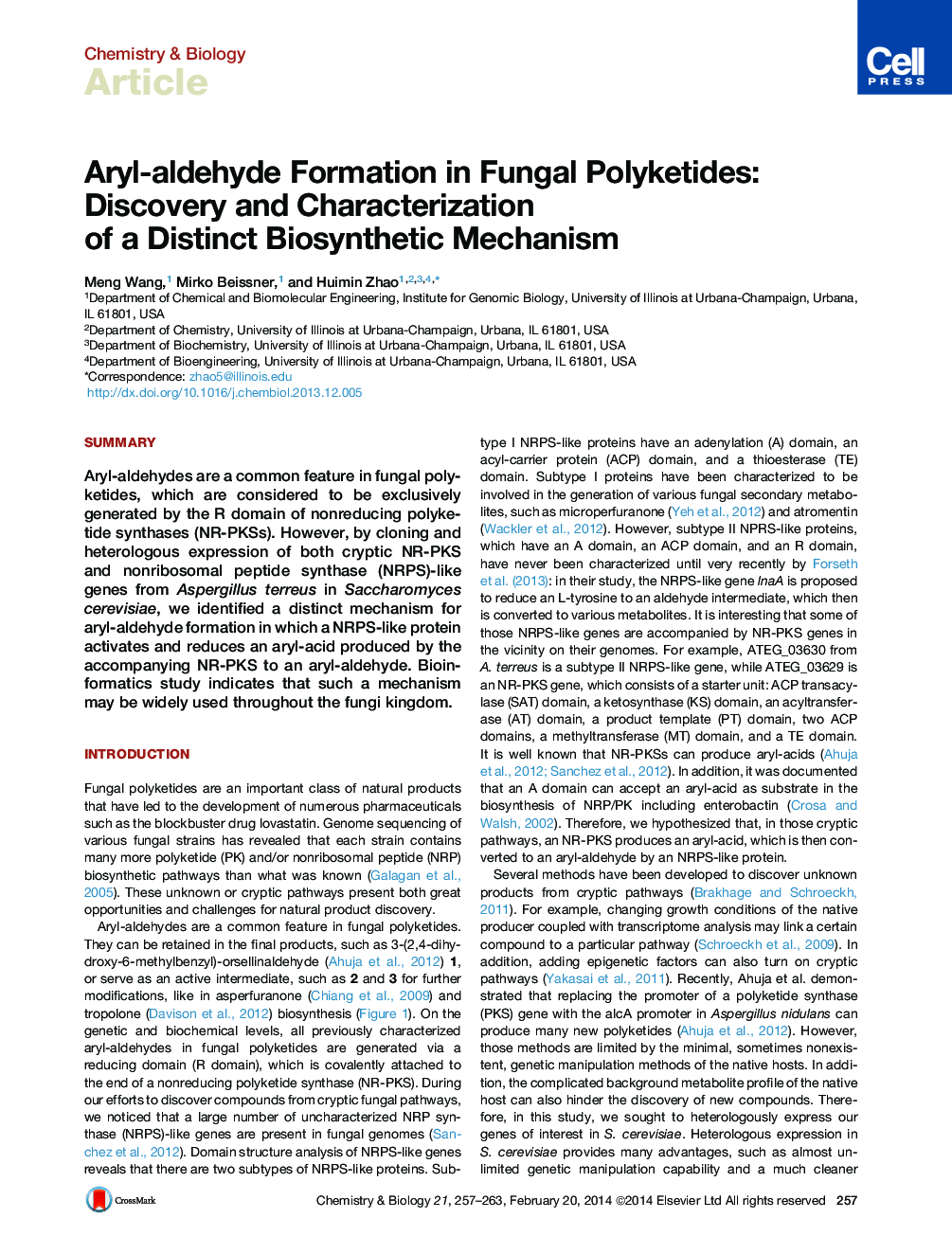| Article ID | Journal | Published Year | Pages | File Type |
|---|---|---|---|---|
| 1393655 | Chemistry & Biology | 2014 | 7 Pages |
•We identify a distinct mechanism for aryl-aldehyde generation in polyketides•An NRPS-like protein can activate and reduce an aryl-acid to an aryl-aldehyde•Such a distinct mechanism may be widely used throughout the fungi kingdom
SummaryAryl-aldehydes are a common feature in fungal polyketides, which are considered to be exclusively generated by the R domain of nonreducing polyketide synthases (NR-PKSs). However, by cloning and heterologous expression of both cryptic NR-PKS and nonribosomal peptide synthase (NRPS)-like genes from Aspergillus terreus in Saccharomyces cerevisiae, we identified a distinct mechanism for aryl-aldehyde formation in which a NRPS-like protein activates and reduces an aryl-acid produced by the accompanying NR-PKS to an aryl-aldehyde. Bioinformatics study indicates that such a mechanism may be widely used throughout the fungi kingdom.
Graphical AbstractFigure optionsDownload full-size imageDownload high-quality image (177 K)Download as PowerPoint slide
